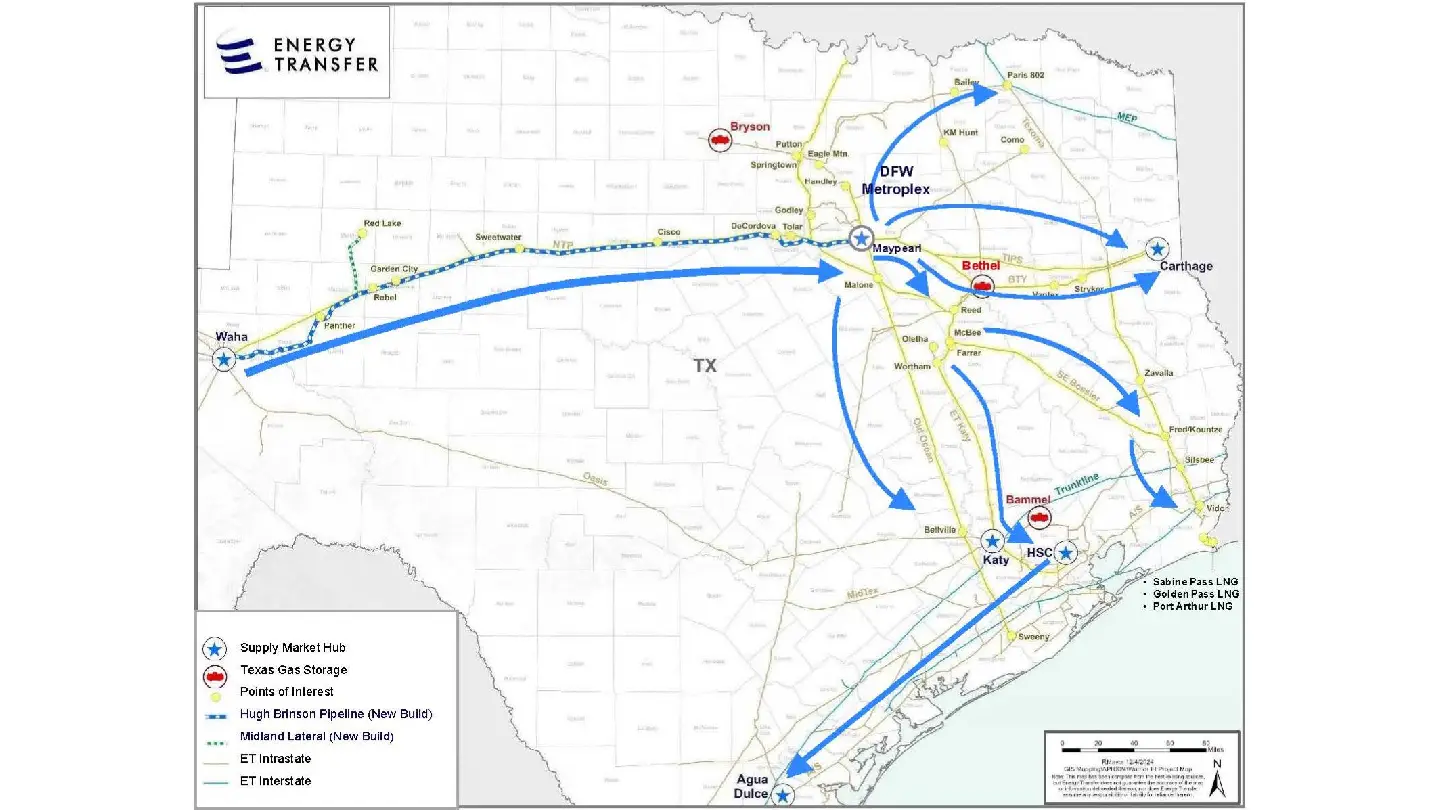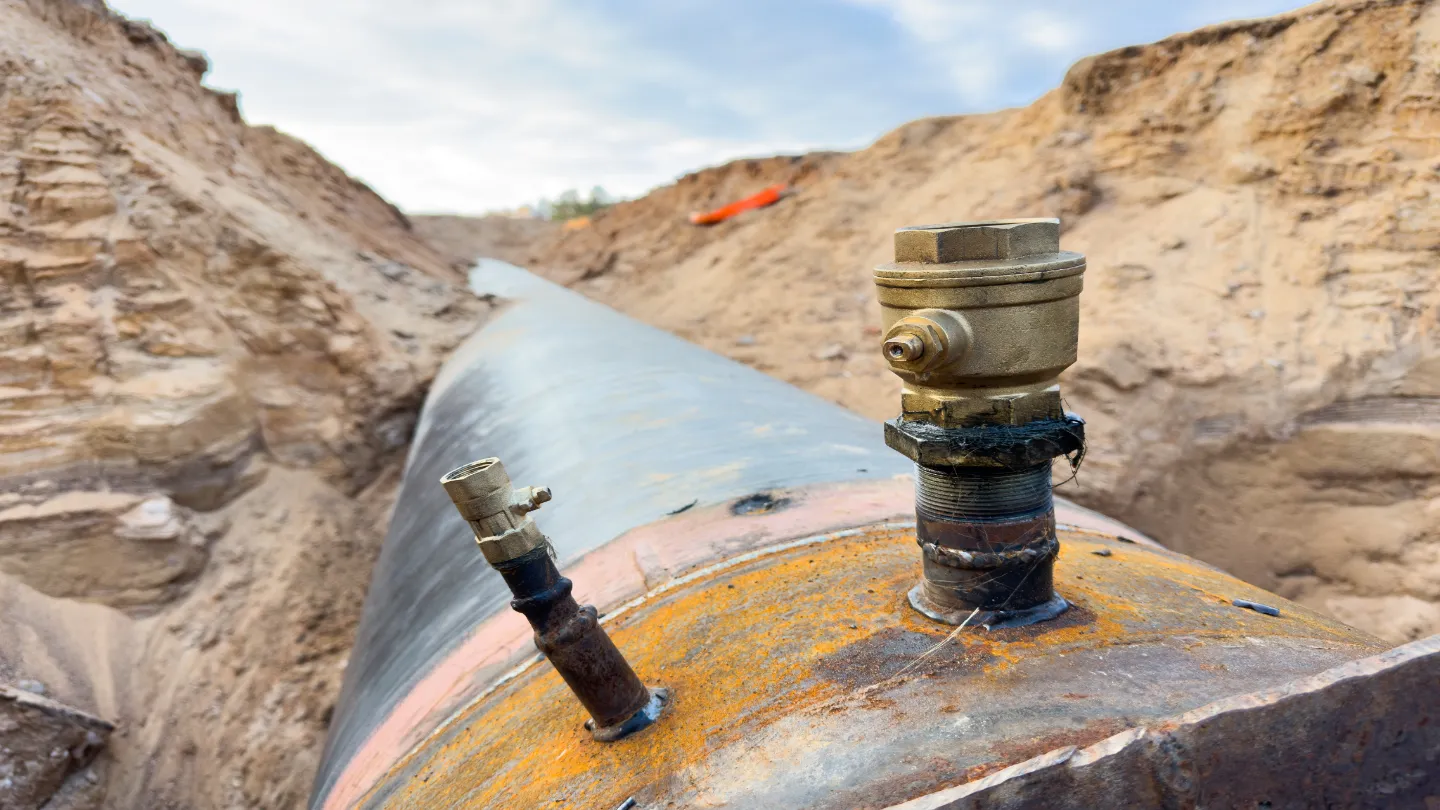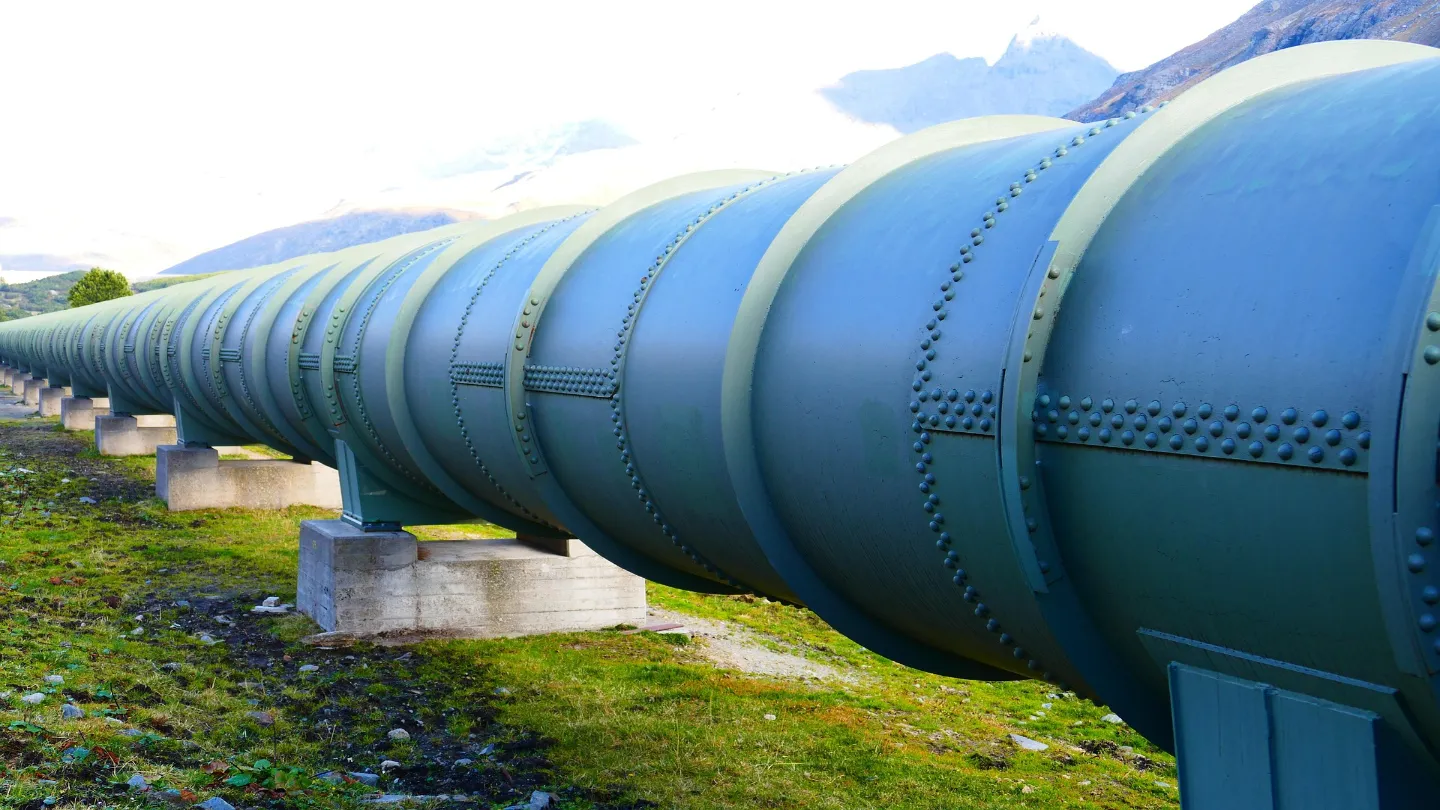The Hugh Brinson Pipeline system (previously called the Warrior Pipeline) in the US is being developed to enable transportation of natural gas from Permian Basin in West Texas to key markets in Texas and Louisiana.
US-based midstream energy company Energy Transfer is responsible for constructing and operating the pipeline.
The company reached the final investment decision (FID) on the construction of the intrastate natural gas pipeline in December 2024.
It will be built in two phases, with the first phase expected to become operational by the end of 2026.
The total cost of developing the Hugh Brinson system, including both the phases, is estimated to be $2.7bn.
Purpose
The plan to build the Hugh Brinson Pipeline was conceived to expand transportation capacity from the Permian Basin to key demand centres in Texas, amid rising natural gas demand.
Once operational, the Hugh Brinson Pipeline will link shippers to Energy Transfer’s existing intrastate natural gas pipeline network and other downstream pipelines.
It will also offer access to key markets and trading hubs in Texas and beyond, including Carthage and Katy.
Hugh Brinson Pipeline Route
The 42-inch Hugh Brinson Pipeline is planned to run around 400 miles from the Waha hub in West Texas to Maypearl, south of the Dallas-Fort Worth Metroplex.
The mainline route will facilitate the transport of natural gas from the Permian Basin to Energy Transfer’s existing pipeline and storage infrastructure, enabling further distribution to markets across Texas and the Gulf Coast.
Alongside, a 42-mile long, 36-inch lateral pipeline, referred to as the Midland Lateral, will connect natural gas processing facilities in Martin and Midland counties to the primary route.
Energy Transfer finalised the route, following a series of civil, environmental, and endangered species surveys. The majority of the pipeline will follow an existing right-of-way (ROW), which is expected to reduce construction-related impacts and limit the overall environmental footprint of the project.
Hugh Brinson Pipeline Construction
The Hugh Brinson Pipeline will be developed in two phases.
In the initial phase, the main 400-mile pipeline with a capacity of 1.5 billion cubic feet per day (Bcf/d) will be constructed. The Midland Lateral will also be developed in this phase.
The Phase 2 of the project entails adding compression facilities to increase the pipeline’s capacity to approximately 2.2 Bcf/d.
The company will proceed with the second phase, subject to shipper demand. However, depending on market conditions, Phase II may be developed concurrently with Phase I.
Overall, the Hugh Brinson Pipeline will span approximately 442 miles and it will traverse through 18 counties in Texas.
Construction plans indicate that most of the easements will require a 50-ft width for permanent access and a 75-ft width for temporary workspace.
The pipeline will be buried at a minimum depth of 36-inches, with deeper installation planned in areas such as road crossings and drainage ditches to ensure safety and regulatory compliance.
To minimise surface disruption, particularly in environmentally sensitive or heavily trafficked areas, construction crews will use Horizontal Directional Drilling (HDD) and bore techniques. Such trenchless methods are commonly employed to reduce ground disturbance and protect infrastructure and ecosystems during pipeline installation.
According to Energy Transfer, the construction of the Hugh Brinson Pipeline will involve safety and quality control procedures, including visual inspections and Non-Destructive Examination (NDE) of every weld that connects segments of the pipeline.
Following installation, the pipeline will undergo hydrostatic testing, a process in which it is filled with water and pressurised to between 1 to 1.5 times its normal operating pressure. This test verifies the pipeline’s strength and ability to withstand high-pressure conditions.
Additionally, regulation devices will be installed to monitor and control internal pressure, preventing it from exceeding established safety thresholds.





